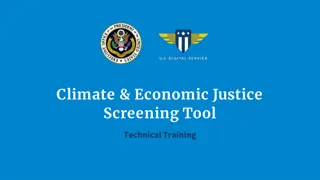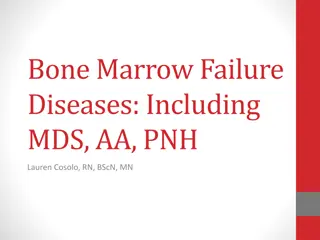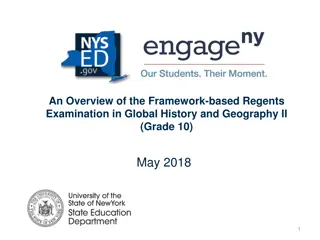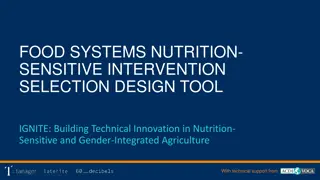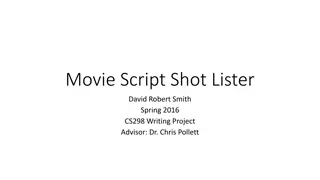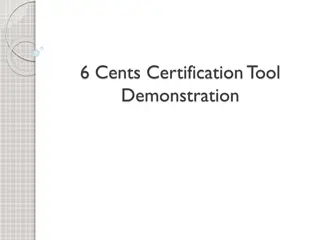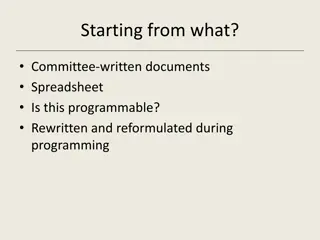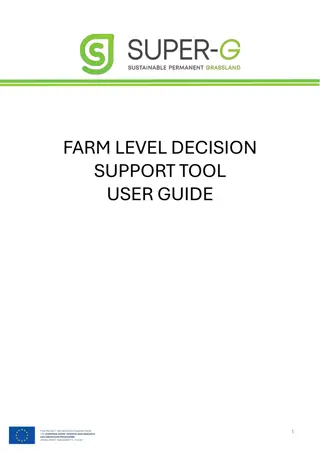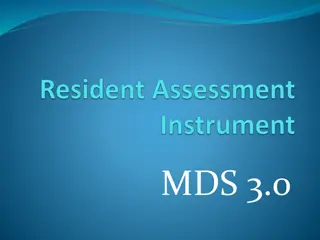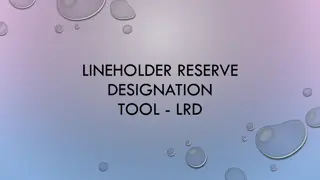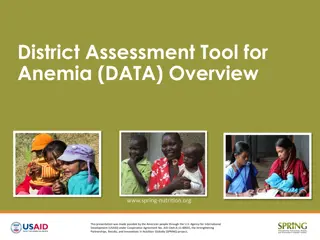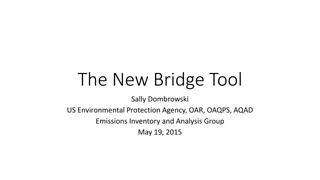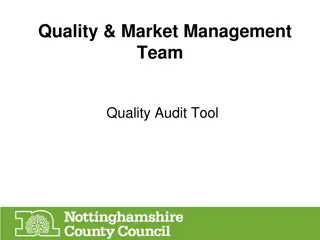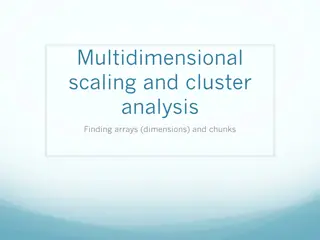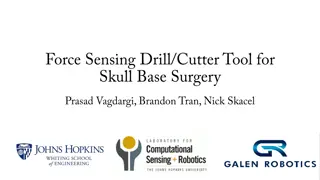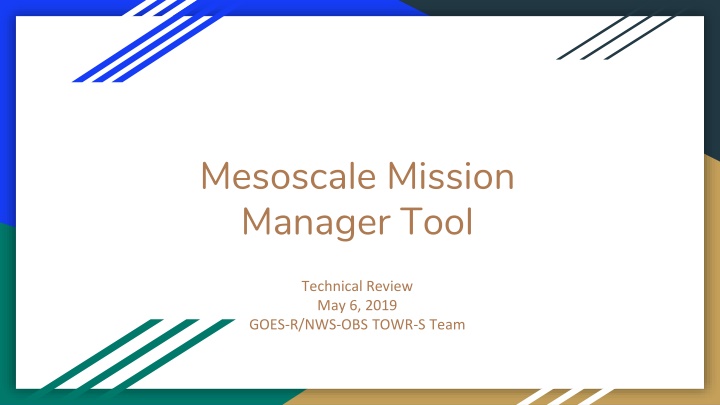
Mesoscale Mission Manager Tool Overview for NWS Operations
Explore the Mesoscale Mission Manager Tool used by the GOES-R/NWS-OBS TOWR-S Team for task scheduling and visualization of satellite imagery locations. Learn about its capabilities, the need for the tool at NWS, and more in this technical review.
Download Presentation

Please find below an Image/Link to download the presentation.
The content on the website is provided AS IS for your information and personal use only. It may not be sold, licensed, or shared on other websites without obtaining consent from the author. If you encounter any issues during the download, it is possible that the publisher has removed the file from their server.
You are allowed to download the files provided on this website for personal or commercial use, subject to the condition that they are used lawfully. All files are the property of their respective owners.
The content on the website is provided AS IS for your information and personal use only. It may not be sold, licensed, or shared on other websites without obtaining consent from the author.
E N D
Presentation Transcript
Mesoscale Mission Manager Tool Technical Review May 6, 2019 GOES-R/NWS-OBS TOWR-S Team
Topics Meso Mission Manager Introduction & Context Dependencies & Languages Development environment & process NOAA Virtual Lab Introduction Importance Modules MMM + Vlab 2
Introduction to MMM Tool The Mesoscale Mission Manager (MMM) Tool is a task scheduling tool for the GOES-16 & GOES-17 Advanced Baseline Imager Mesoscale Domain Sectors (MDS) MMM Tool allows visual representation of satellite mesoscale imagery locations at a specific time Single-page VLab web application is created using open-source tools with strong support/ongoing releases Comprised of 40 components (javascript files) - 6927 lines of Js code Two versions of the tool exist Private version allows users to make requests Public version allows users to see where MDS will be located 3
Introduction Continued... Gives forecasters ability to visualize and request tasking of GOES East and West ABI meso sectors 60 second, 30 second & Full Disk requests Two 60 sec requests can be made at one time per satellite One 30 sec request can be made at one time per satellite Full Disk request provides 5 minute Full Disk imagery (no Mesoscale Imagery) Allows NWS Senior Duty Meteorologist (SDM) to create plan based on requests from NWS Weather Forecast Offices and National Centers 4
Why Does NWS Need the MMM Tool? GOES-13/14/15 imagers have Rapid Scan Operations (RSO) - - Either on or off, not targeted Same area scanned every ~7 minutes GOES-16/17 ABIs have Mesoscale Domain Sectors (MDS) - - Always on while in Flex Mode (Mode 6) Different non-fixed geographic areas scanned every 1 minute or 30 seconds (1000x1000 km) GOES-16/17 MDS is NOT an extension of RSO, it is a completely new capability further complicated by large geographic distribution of NWS operations community 5
What is the MDS Request Process? MDS Requesters can make MDS or mode change requests to the National Centers for Environmental Prediction Senior Duty Meteorologist (NCEP SDM). Requests must be placed at least 30 minutes prior to the desired start time via the MMM Tool. SDM prioritizes and de-conflicts requests for maximum data coverage. The SDM sends requests to the NESDIS Environmental Satellite Processing Center (ESPC) Help Desk. ESPC Help Desk relays MDS request to the Office of Satellite Products and Operations (OSPO) Satellite Operations Control Center (SOCC). SOCC approves or rejects request based on the health and safety of the satellite. SOCC executes satellite command on approval. 8
How is the MMM Tool Governed? The MMM Tool is developed and maintained by the NWS Office of Observations The NWS Office of Observations supports the MDS Core Team, headed by the NWS Operations Division MDS Core Team consists of NWS Regional Focal Points, National Centers, NWS Ops Center, and NESDIS The MDS Core Team meets on a monthly basis to discuss MDS issues, including bugs or suggested improvements to the MMM Tool That information is forwarded to the MMM Tool developers, who implement and test the changes to the MMM Tool Changes to the MMM Tool are applied on a monthly development cycle for new features and ASAP for bug fixes 9
What is the VLab? The NOAA Virtual Lab is a NOAA-wide content management system governed by the NWS Meteorological Development Lab (MDL) and hosted on the College Park instance of IDP. The VLab is an instance of the Liferay platform that provides tools for: Creating custom web content developing software (all open source) ElasticSearch database (NoSQL) VLab provides an infrastructure for fast & simple development 11
Vlab Reliability ElasticSearch Vlab Master node and two backup nodes If master node fails, a backup node takes over When master node recovers, becomes master again and data is synchronized Located in College Park IDP Backups handled via snapshots that can restore files when necessary File system changes are written to Network FIle System (NFS) mounted directory and controlled by a netapp Snapshots created every hour (6 copies) Additionally, all snapshots are copied to Boulder IDP every 6hrs 12
Vlab User Authentication Vlab provides user auth via noaa.gov account Vlab login expires after 2 hours of inactivity Admin assigns role to user for role-based access 13
Access Controls Vlab provides role-based access to: ESearch DB via Elastic Interface Manager Documents Web content Interface allows for configuration of access rights to particular users or groups Ability to create custom roles 14
JSON Web Services API Esearch DB communication & forum create, read, update, delete AJAX call is triggered from JS function on load of application (caching disabled) Authentication token is required for all data modification calls 15
Forums Forums used for communication throughout community Ability to create forum that community members can subscribe to for notifications Ability to post custom content via HTML generated directly from application 16
MMM Implementation and the NOAA Virtual Lab 17
Languages & Libraries JavaScript (ES6+) - Web Application Devlopment React.Js - UI components Babel - Javascript Compiler JQuery - UI manipulation D3.Js - UI component interaction AJAX - DB communication Node.Js - server environment NPM - Package manager 18
Languages & Libraries Continued... Python - Back-end scripting Script makes JSON Web Services API call to push data ElasticSearch Listener is triggered on meso change event or every hour Development tools Node.Js - JS runtime environment Atom - text editor Git - repo management 19
Procedures Development Workflow A new branch is created from master for each new feature/bug fix A local instance of the application is used for development Utilize vlab-dev as staging environment for testing procedure Production build is created from current branch Files uploaded to vlab-dev Regression testing procedure implemented Branch merged into master 20
Procedures Continued... Tag is created Release notes are added to updates page of Vlab Files are uploaded to production server Production test procedure done in collaboration with SDM 21
Version Control Versioning Format for version: 2.<year>.<month>.<iteration in month> All versions are tagged in Git repo All release notes available on Vlab 22
Vlab Features Utilized in MMM Tool MMM is implemented as user content on the NWS VLab Features utilized: File host/manager - host files for mmm tool Authentication and user management (login, user roles interface, community membership) Database host/manager - provides interface for creating indices and JSONWS api Security - secure web server, role-based access controls, file security controls, DB access controls Web content portlet/web page - url schema, application display setup Forum post & Email notifications Provides suite of features that make MMM tool cost effective and easier to develop/maintain 23
MMM Integration with VLab IDP College Park VLab Collaboration Services (Liferay) ESearch JSONWS API ISatSS Browser TOWR-S Comm ISatSS Web Page Doc library Web Content Display NPM build Forum E-Mail Repo 24
Conclusion GOES-16 & 17 satellites provide new technology that require a new workflow MMM Tool provides workflow for proper utilization of new ABI instrument Central location for collaboration of a widely dispersed NWS community Tool is flexible, extensible, and low impact VLab has proven to be an effective suite of modules for fast/easy implementation of applications 25
Questions? 26



